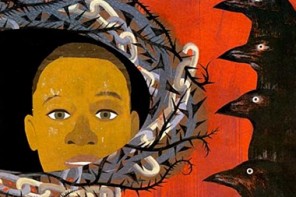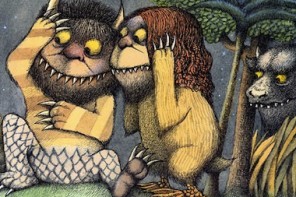“This first novel, as subtly wrought as a piece of Navajo silverware, is the work of a young Kiowa Indian who teaches English at the University of California in Santa Barbara. That creates a difficulty for a reviewer right away. American Indians do not write novels and poetry as a rule, or teach English in top-ranking universities either.”
So begins the New York Times’ review of N. Scott Momaday’s House Made of Dawn, written at the time of its publication, forty years ago this week. In the decades that followed the novel’s publication, a stream of American Indian novelists, poets, and playwrights followed in Momaday’s wake in what became dubbed as the “Native American Renaissance.” Native Americans had been engaged in verbal artistry since long before the arrival of Europeans in the Americas, and Native poets and novelists had been publishing in English for more than a century. But Momaday’s Pulitzer initiated the first period in US literary history in which “Native American literature” (or “American Indian literature”—take your pick) would be widely recognized as such.
The readers of 1968 were ready for Momaday. In the years that followed, Vine Deloria Jr.’s manifesto of Indian self-determination, Custer Died for Your Sins, became a surprise bestseller, and Dee Brown’s Bury My Heart at Wounded Knee swept the nation with its trenchant account of Native American history. In the Vietnam era, at least some Americans were recognizing that US imperialism had begun at home.
House Made of Dawn, though, is quite different than those other books, and indeed quite different from any other book of its time. It offers neither an angry cry of resistance nor a poetic elegy of suffering. Its protagonist, Abel, returns from World War II to his home in the Jemez Pueblo, where he had been raised by his grandfather. He is sick, the book tells us, unable to enter the rhythms of life that govern the Pueblo landscape. He kills an albino man whom he believes to be an evil being, a culebra, and serves time in prison before being released to Los Angeles via an Indian relocation program. He is once more unable to regain his equilibrium. After suffering a brutal beating at the hands of a crooked police officer, he returns to the Pueblo for a second time. The novel’s final paragraphs offer some small measure of hope as Abel, his hands broken and “his body cracked open with pain,” runs through the silent landscape, just as he did in its opening pages.
This bare plot summary makes House Made of Dawn sound like a caught-between-two-worlds-tragedy of the kind that Americans know well. It isn’t. For starters, the novel is clear that Abel’s sickness does not begin when he goes into the army or when he returns to Jemez, but has deeper, more mysterious roots. In fact, Momaday is less interested in getting at the causes of Abel’s pain than in producing a bewildering mosaic of stories, songs, and sermons that might orient him toward recovery.
It is the compilation of these materials that gives the novel its strangeness. House Made of Dawn includes not only Pueblo ritual, including a ceremony in which contestants on horseback vie to pluck a rooster buried to its neck, but also the chants of the Navajos, the peyote rites of the Native American Church, and the origin story of Momaday’s own Kiowas. It is not clear what any of this means to Abel, and there is very little instruction for the reader on how to find connections among these fragments of indigenous spiritual life. True to its high modernist aesthetic, the novel leaves us to wander in awe and wonder, disoriented but enchanted.
Tosamah, the Kiowa “Priest of the Sun,” begins one of his sermons by proclaiming from the Gospel of John: “In the beginning was the Word.” In House Made of Dawn, Momaday hopes to return readers to the thrall of language as something old, enduring, and powerful. The title of the novel comes from the Navajo Night Chant, a healing ritual that puts the world back together with spoken language. Abel’s Navajo friend, Benally, tells Abel about the Night Chant and recites some of it to him. As with the Gospel of John, Momaday’s words here are borrowed. This time, he takes not only from the Navajos, but also from Washington Matthews, a 19th-century anthropologist who recorded the Night Chant and translated it into English.
Happily, with abundant dark clouds, may I walk. Happily, with abundant showers, may I walk. Happily, with abundant plants, may I walk. Happily, on a trail of pollen, may I walk. Happily may I walk. Being as it used to be long ago, may I walk.
What the reader receives from House Made of Dawn is not an insider’s account of Indian life, the secrets of a world hidden away, but a story comprised of borrowed words. Reflecting on his trial for murder, Abel thinks, “Word by word these men were disposing him in language.” Abel speaks very little, and seems to listen even less. Language alienates and confuses him, but it is Momaday’s gift to show how even borrowed words—ripped from their original contexts and respoken—could still retain their power.
Language for Momaday is at once ancient and new, a threat and a cure. The final sentences of the novel read:
He was running, and under his breath he began to sing. There was no sound, and he had no voice; he had only the words of a song. And he went running on the rise of the song. House made of pollen, house made of dawn. Qtsedaba.
The penultimate sentence is from Matthews’s translation of the Night Chant. The final word is untranslated from the Jemez, or Towan, language, a tongue that Momaday does not speak. Other American Indian writers would follow in Momaday’s wake to write from clearer, less cluttered tribal perspectives. But Momaday understood that our postmodern age requires that we cannot become arrested in longing from the words we have lost. Instead, we have to make our liturgies from the words we can find.



